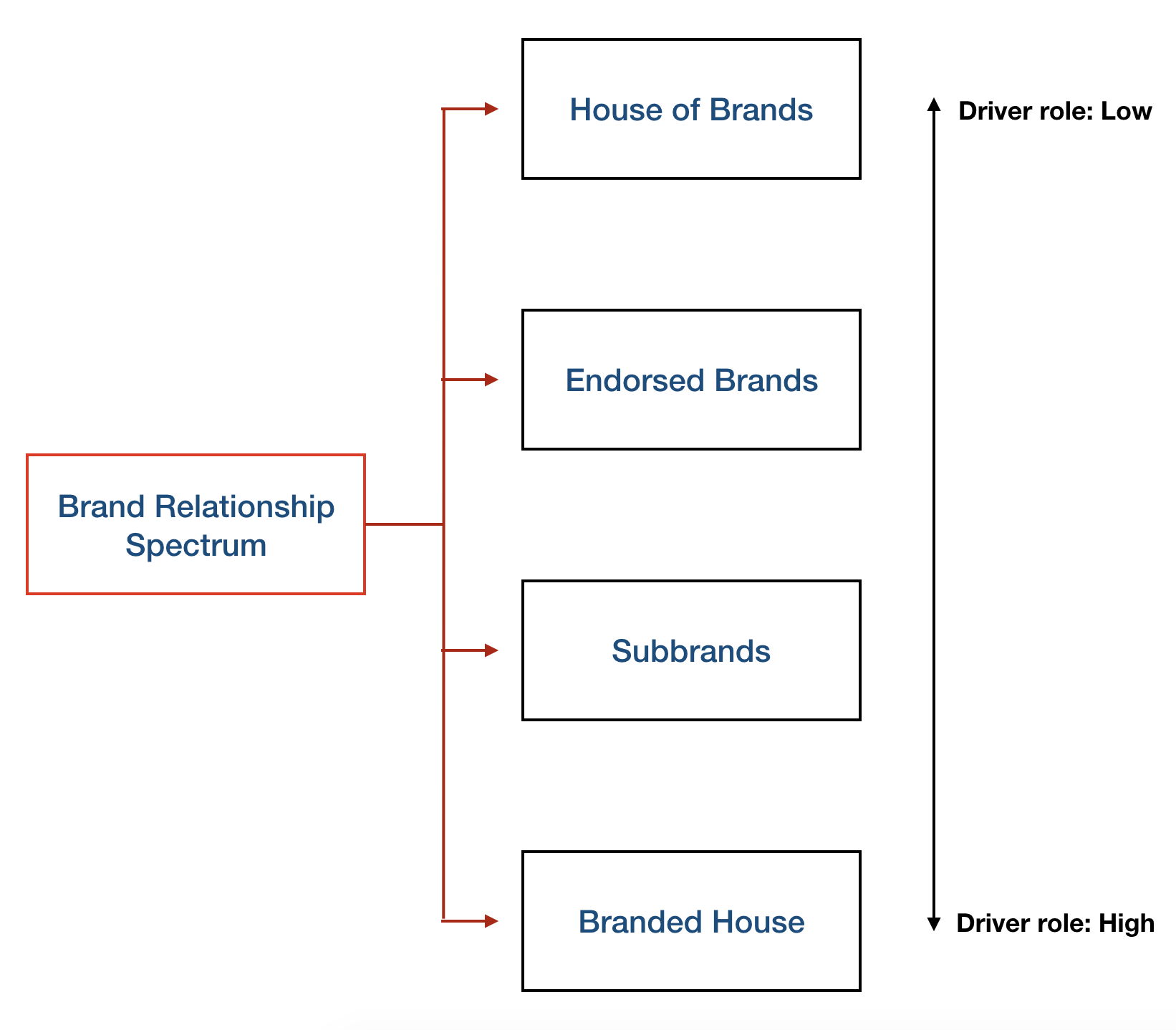In our previous blog , we discussed how brands can be structured with the help of brand architecture, in which two of them use brand product-matrix and brand hierarchy. Both are capable of helping brand managers with a few brand extensions, and sub-brand management. However, in recent years, we have witnessed the rapid changes in the market, the multiple strategies required in order for these brands to compete in the market and the multiple challenges that brand managers now face.
Brand managers must be able to aggressively extend their brand and manage the complex structures of current brands whilst avoiding the overlapping of existing and extension brands.
To avoid confusion and clear details of multiple brands, Aaker and Joachimsthaler introduced the ‘Brand Relationship Spectrum’, a framework in which brand managers can use to manage multiple yet complex brands.
Brand Relationship Spectrum (BRS) is a continuum that displays four different strategies and under that, nine other sub-strategies. Each strategy differs based on the brand’s driver role. The driver role manifests to which degree the brand itself drives the purchase decision and user experience. For example, if you want to buy a car, what are the names that automatically pop up in your mind? Is it Toyota, Honda or Innova, Civic? The answer that you give is responsible of the primary driver role of the purchasing decision. Therefore, each strategy is divided into the differences of the driver role.

House of Brands
Did you know that the Maserati and Jeep vehicles are owned by one single company, Fiat Chrysler Automobiles? Well, that’s confusing.
As the strategy that displays the lowest driver role of the parent brand, House of Brands distinguishes each brand with contrasting differences. House of Brands have a lot of individual brands that are not connected to their parent company. They are the guarded walls that divide brands in-between so that each of them can be perceived as individual brands from the consumer’s perspective. This allows the parent brand to differentiate each of its brands to consumers as if they were a totally separate brand. Additionally in House of Brands, the parent brand can actually send out different marketing messages and brand feelings through the several other brands. Thus, creating different sensations and experiences.
Endorsed Brands
Endorsed brands are still individual, each with their own target market and different marketing messages. However, endorsed brands connects themselves with the parent brand. Usually established brands use this strategy to let consumers know who produced the particular product. An example is Nestlé confectionery and its many independent brands, including After Time, and even Kit-Kat, with a brand personality of its own. Nonetheless, the Nestlé brand is still present in it’s packaging and marketing messages. As an established brand, Nestlé has strong and favorable associations, which has resulted in consumers putting their trust in the brand, including its independent brands.
Sub-Brands
In sub-brands, the master brand plays a medium to high driver role. The sub-brands will connect itself to its parent brand and modify the parent brand’s associations. A few examples to help you better understand include Microsoft Windows and Microsoft Office, Apple Watch and Apple Pencil. In sub-brands, the driver role is shifted more towards the parent brand, and it carries out the risk in affecting the parent brand’s image and associations. Therefore, parent brands must be careful in ensuring that their sub-brands are up to the standards of the parent brand.
Branded House
The exact opposite of house of brands, branded house directly associates the parent brand’s name with their sub-brands, to which the parent brand holds the power of the driver role. For example: British company Virgin Group has a lot of brands, including Virgin Airline, Virgin Media and 12 other brands. The name Virgin, is the driver role of the purchase. It represents clarity because consumers already know the values and the personality of the parent brand. Furthermore, branded house enables the parent brand to synergize its values across its sub-brands.
--
If you'd like to find out where your brand currently stands in the market, according to your target consumers, check out our brand score page.

